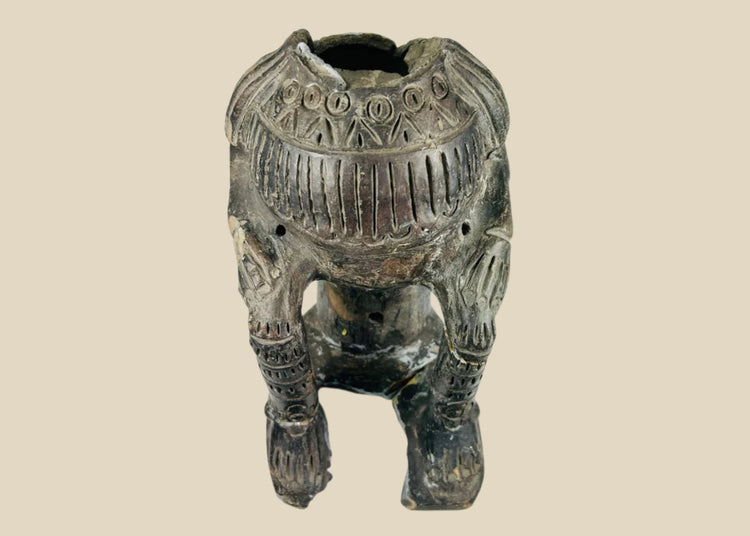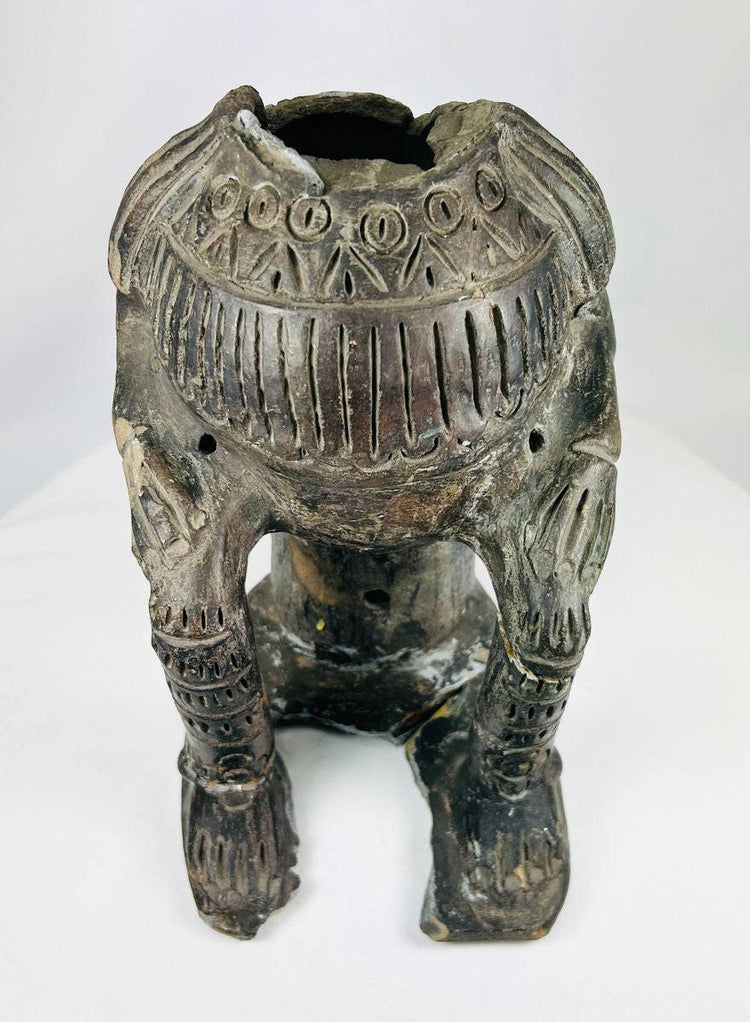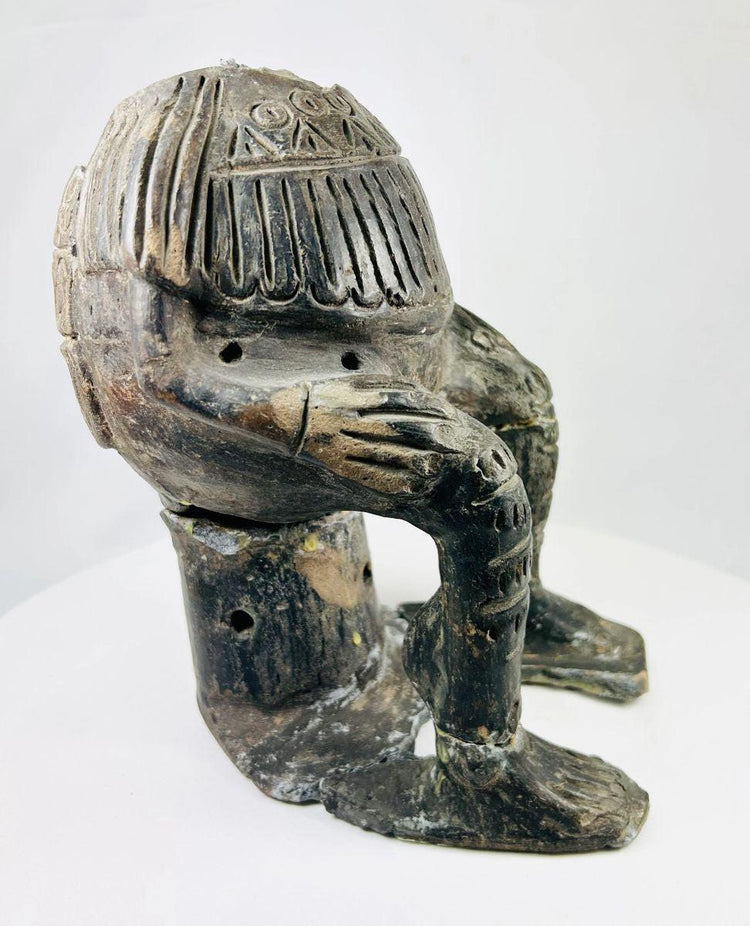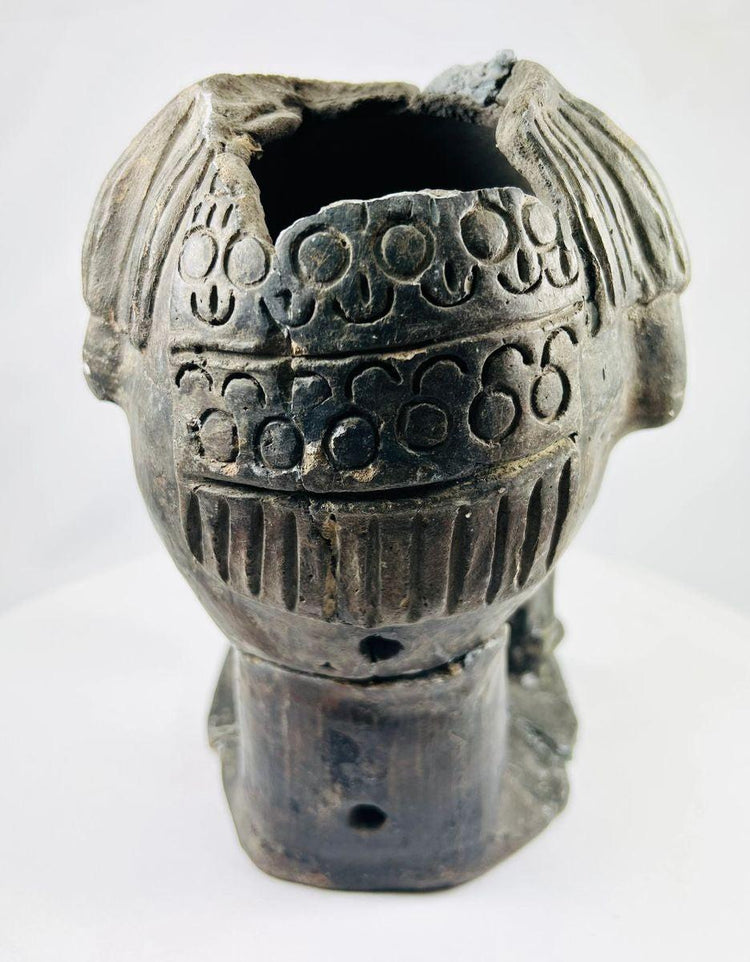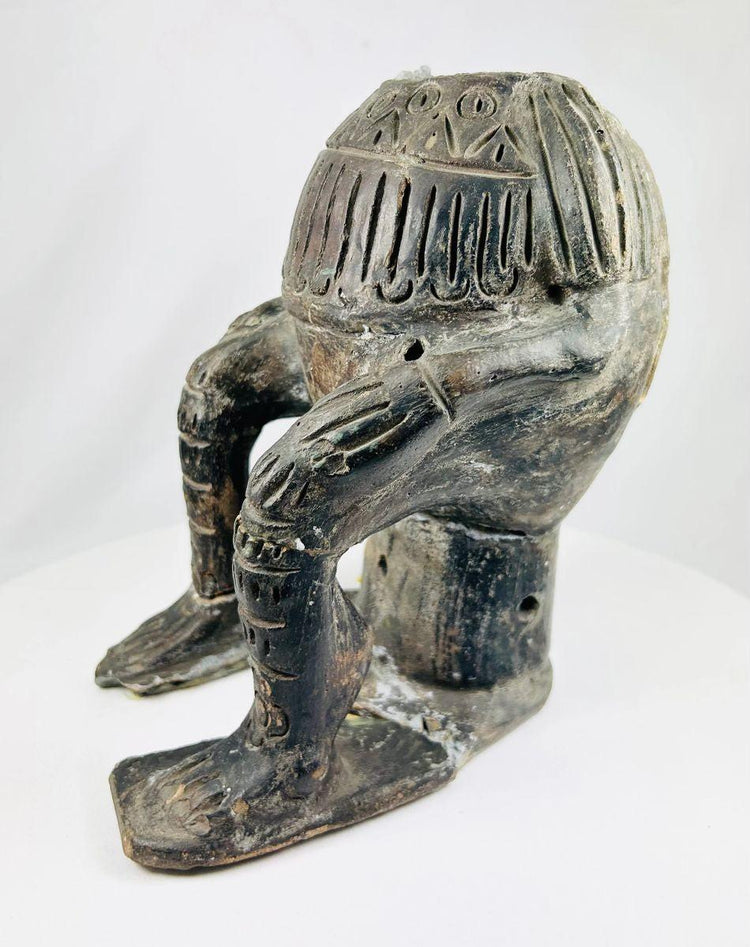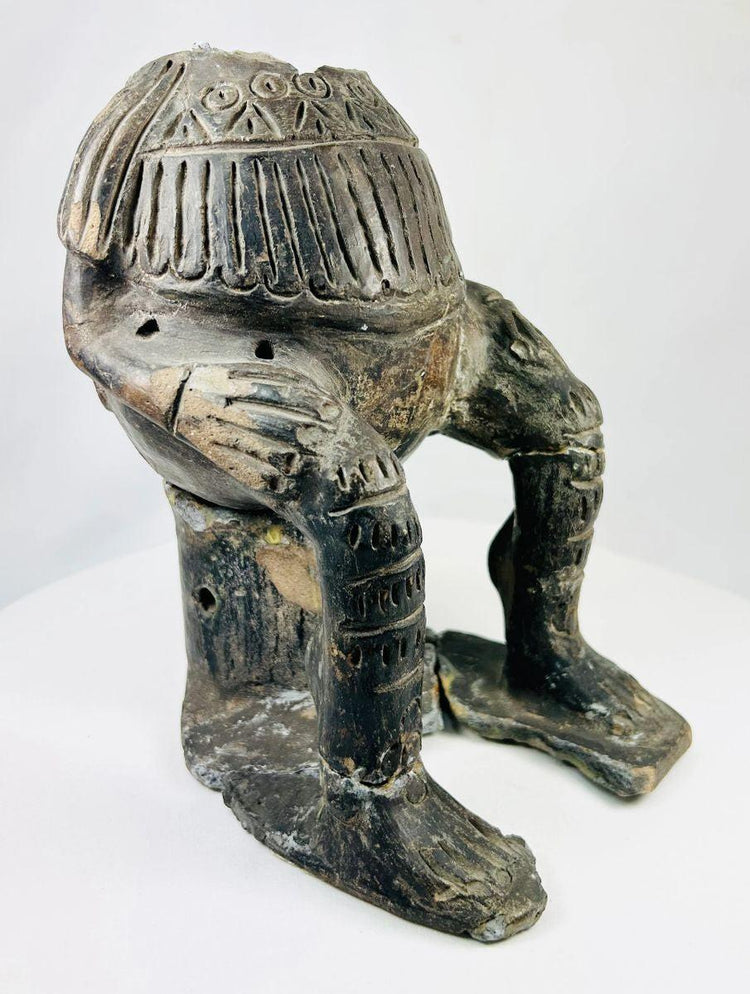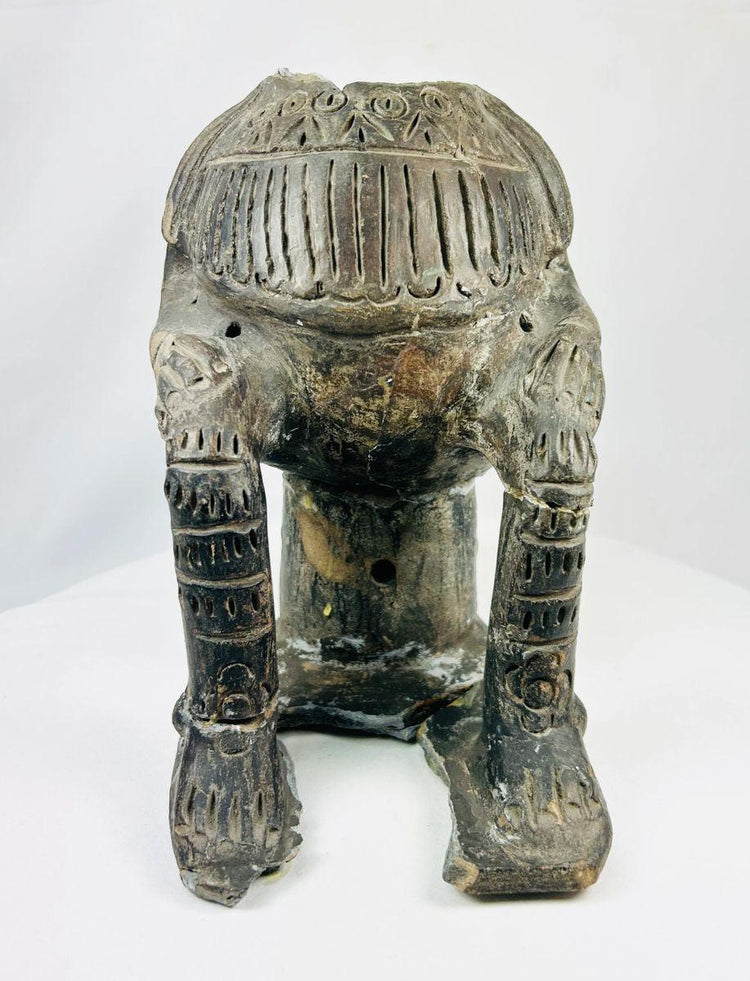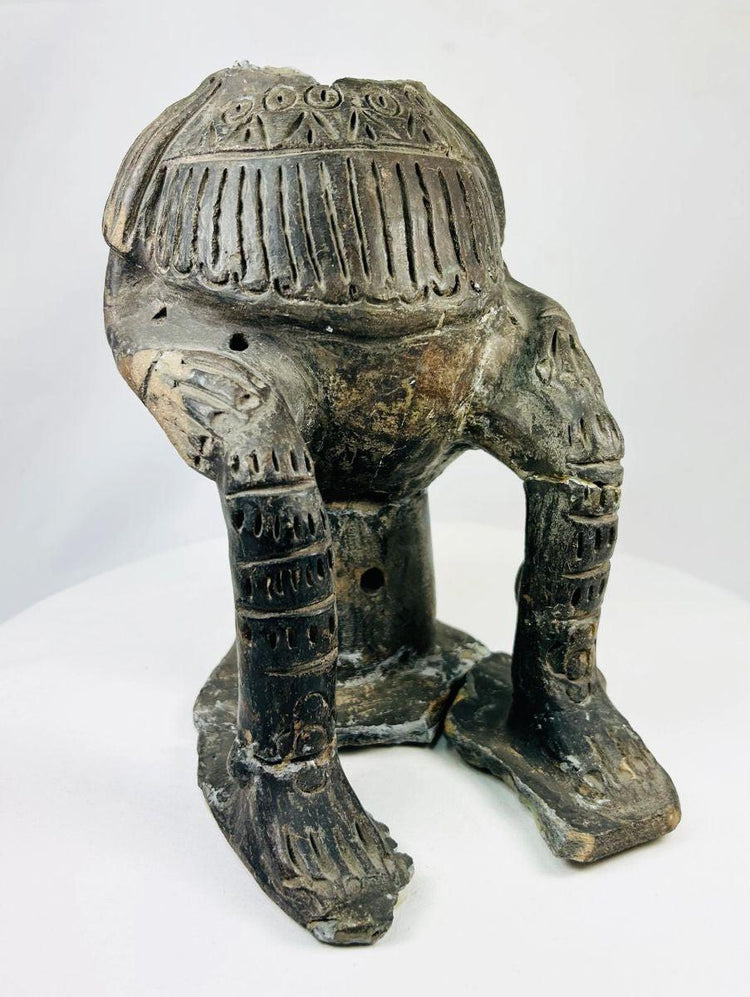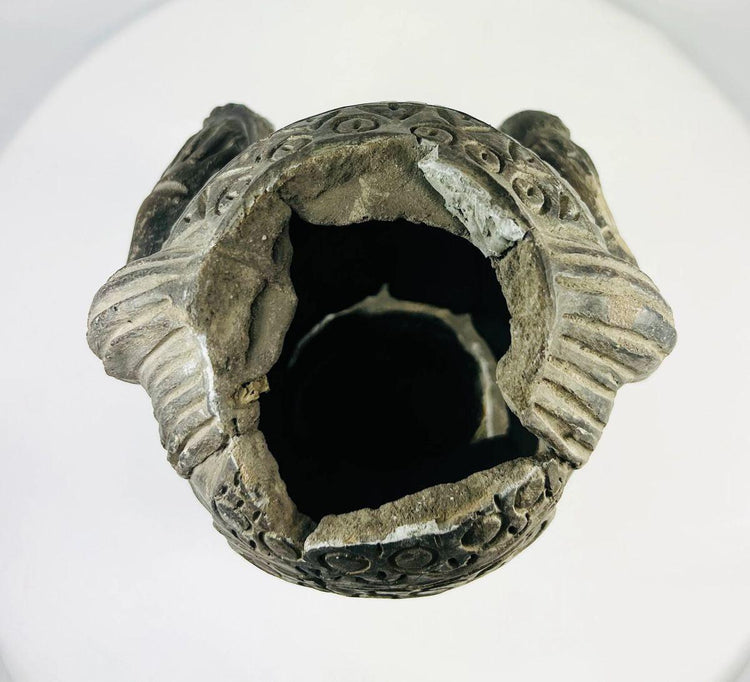Terracotta Human Figure | In the Tradition of Chupicuaro, West Mexico | Mid-20th Century
Description
More
Less
Historical Context & Origin
Region: West Mexico (Chupicuaro style)
Material: Terracotta
Period: Mid-20th Century (in the style of 500 BCE – 300 CE)
Description
This terracotta figure is modeled in the traditional style of the ancient Chupicuaro culture of West Mexico, renowned for its early ceramic traditions. Shown seated with exaggerated limbs and a large, incised head, the figure displays the geometric engravings, linear motifs, and hollow construction characteristic of Mesoamerican funerary and ceremonial sculpture. Pierced venting holes suggest intentional design for firing or ritual use, while traces of surface calcification and patina highlight its age. Although stylistically faithful to ancient examples, this piece most likely dates from the mid-20th century and was produced as a revival work or educational replica.
Features
- Seated terracotta figure with stylized proportions
- Hollow interior with pierced venting holes
- Geometric incised and dot-pattern designs
- Surface calcification and earthen patina
- Evidence of old repairs and restoration
Cultural Significance
The Chupicuaro culture, flourishing between 500 BCE and 300 CE, was one of Mesoamerica’s earliest ceramic-producing societies. Their distinctive human and animal figures often appear in burial contexts, symbolizing ancestors, deities, or ceremonial participants. While this example is a later reproduction, it reflects the enduring influence of Chupicuaro design on Mexican cultural identity and modern interpretations of pre-Columbian art.
Condition
Fair condition. Visible break and restoration to the upper head, along with multiple chips and fractures at the base and feet. Patination and surface deposits present. Structurally stable and display-ready.
Dimensions (approximate)
Height: 8.5 in
Age
Mid-20th Century reproduction in Chupicuaro style
Description
Historical Context & Origin
Region: West Mexico (Chupicuaro style)
Material: Terracotta
Period: Mid-20th Century (in the style of 500 BCE – 300 CE)
Description
This terracotta figure is modeled in the traditional style of the ancient Chupicuaro culture of West Mexico, renowned for its early ceramic traditions. Shown seated with exaggerated limbs and a large, incised head, the figure displays the geometric engravings, linear motifs, and hollow construction characteristic of Mesoamerican funerary and ceremonial sculpture. Pierced venting holes suggest intentional design for firing or ritual use, while traces of surface calcification and patina highlight its age. Although stylistically faithful to ancient examples, this piece most likely dates from the mid-20th century and was produced as a revival work or educational replica.
Features
- Seated terracotta figure with stylized proportions
- Hollow interior with pierced venting holes
- Geometric incised and dot-pattern designs
- Surface calcification and earthen patina
- Evidence of old repairs and restoration
Cultural Significance
The Chupicuaro culture, flourishing between 500 BCE and 300 CE, was one of Mesoamerica’s earliest ceramic-producing societies. Their distinctive human and animal figures often appear in burial contexts, symbolizing ancestors, deities, or ceremonial participants. While this example is a later reproduction, it reflects the enduring influence of Chupicuaro design on Mexican cultural identity and modern interpretations of pre-Columbian art.
Condition
Fair condition. Visible break and restoration to the upper head, along with multiple chips and fractures at the base and feet. Patination and surface deposits present. Structurally stable and display-ready.
Dimensions (approximate)
Height: 8.5 in
Age
Mid-20th Century reproduction in Chupicuaro style
You May Also Like


























